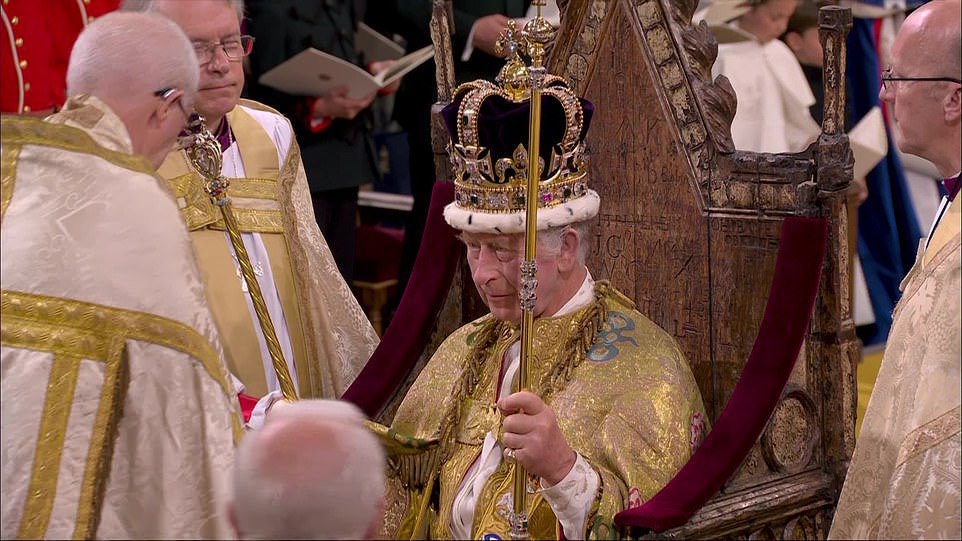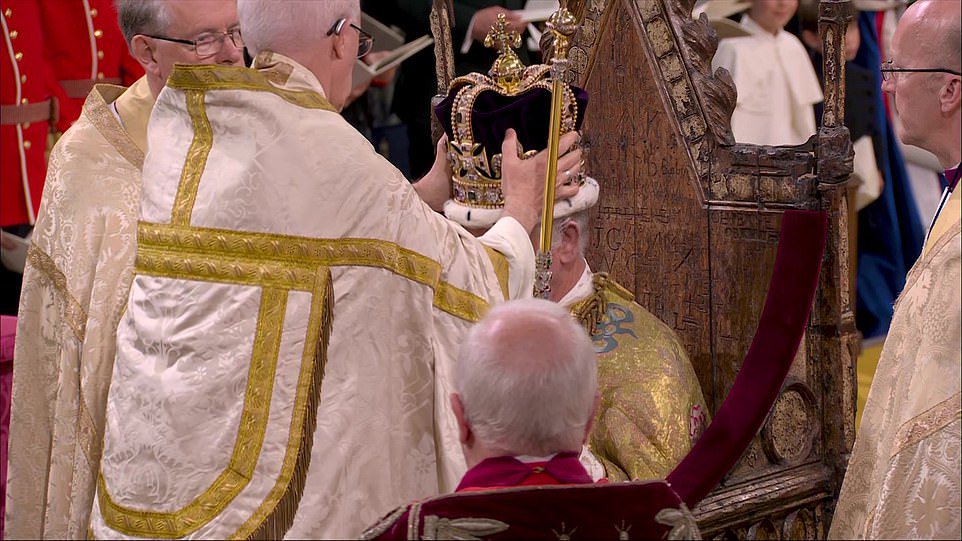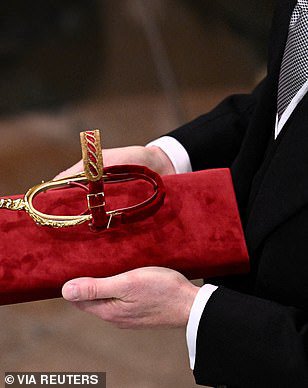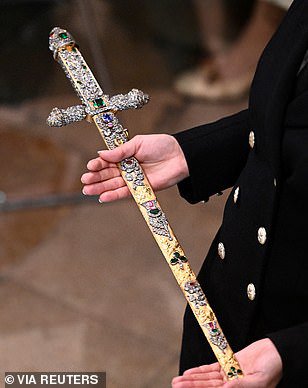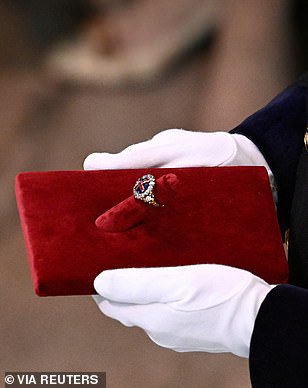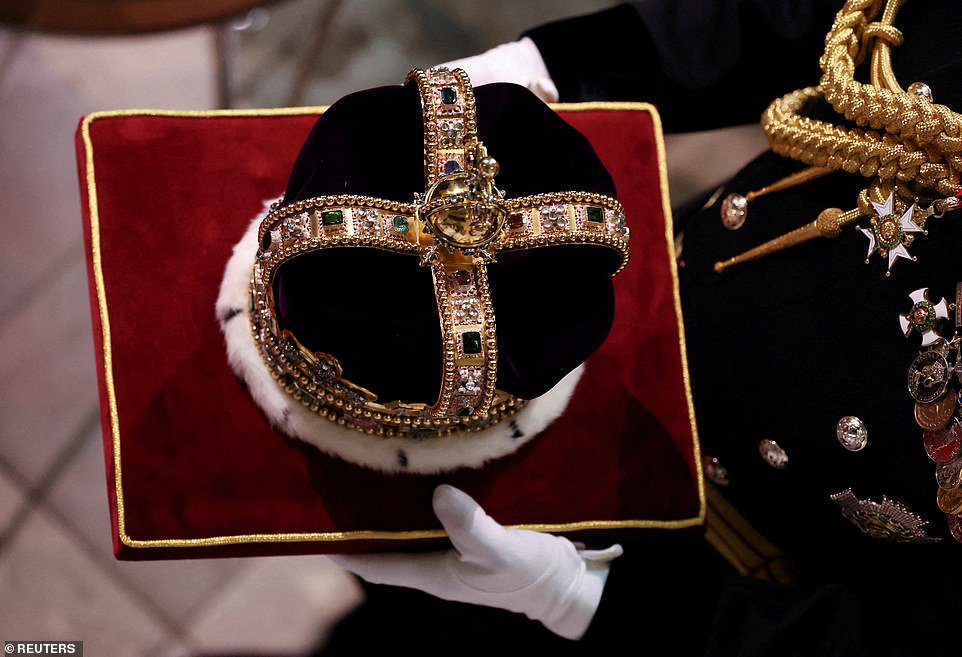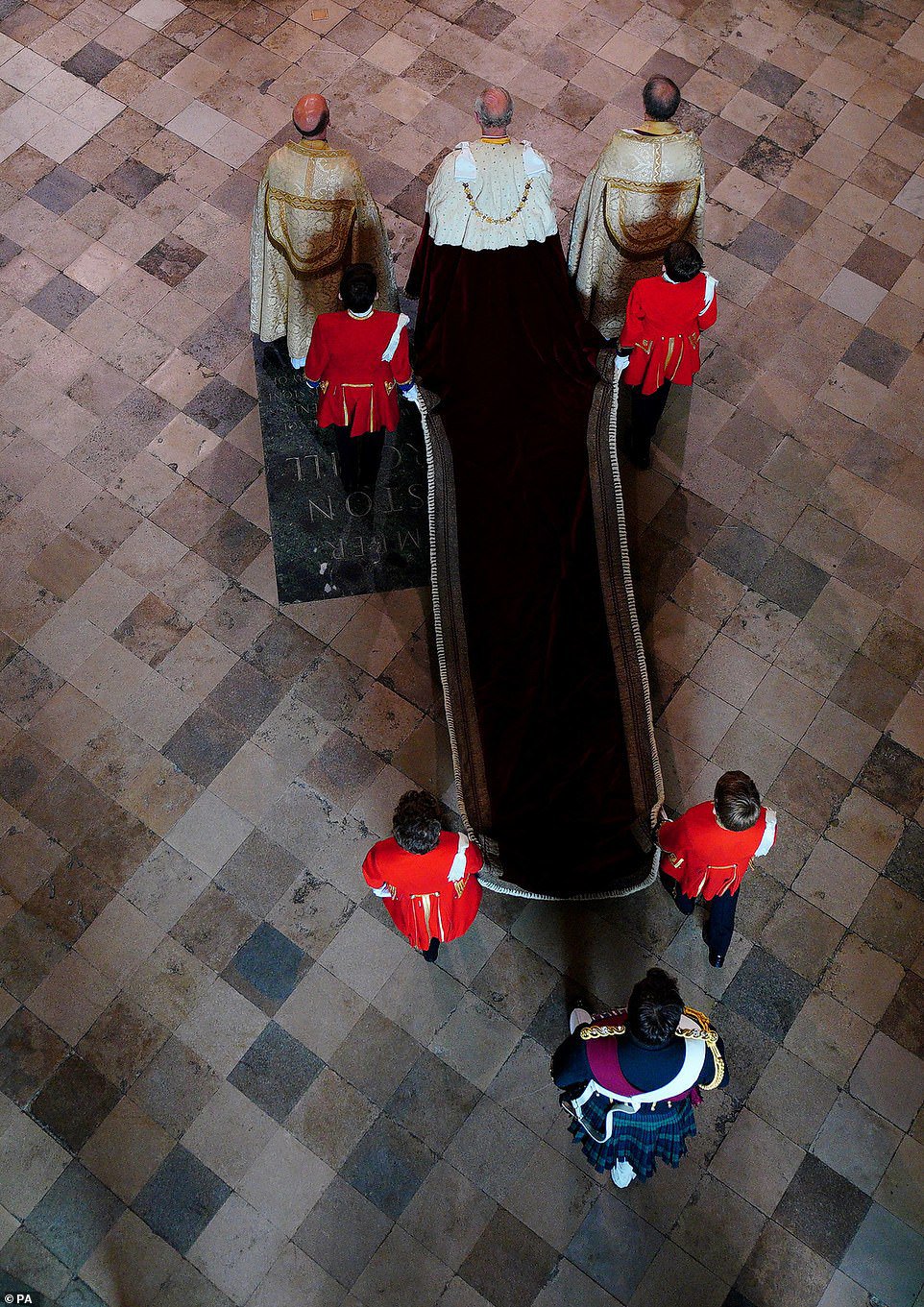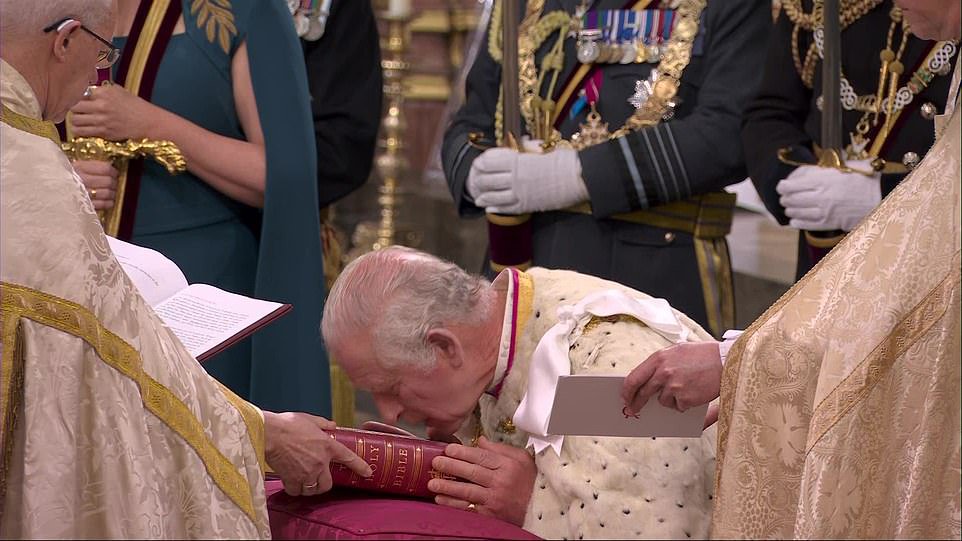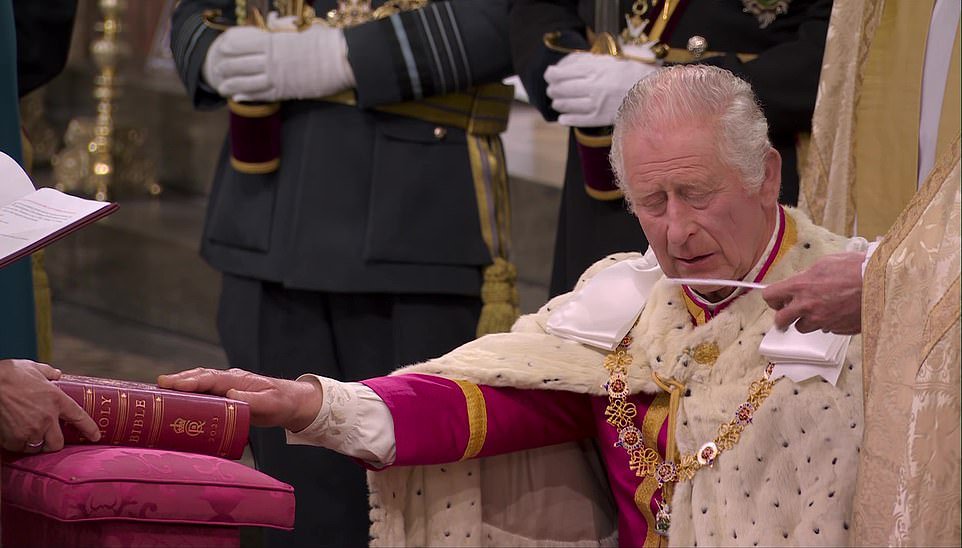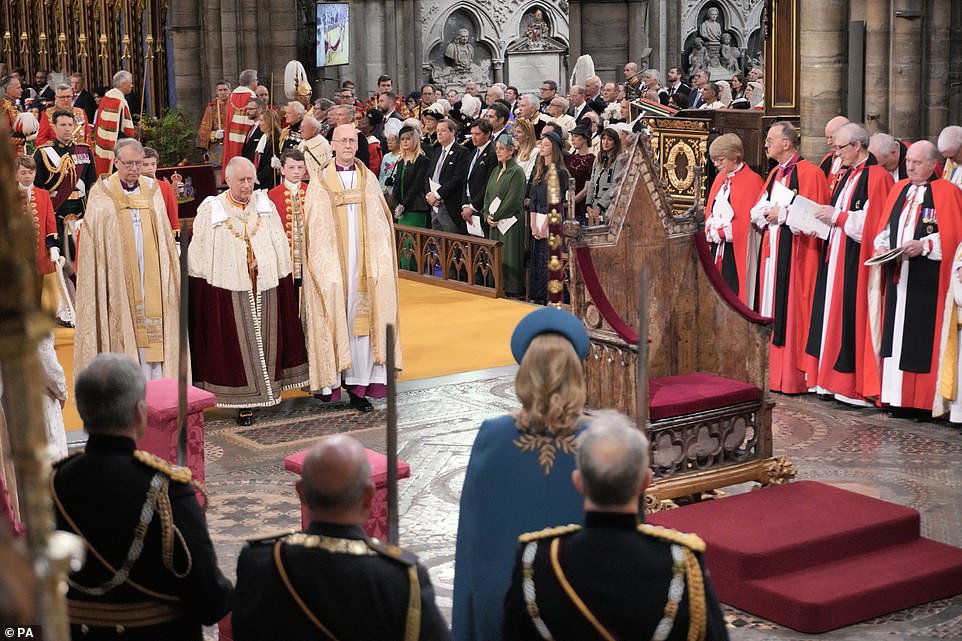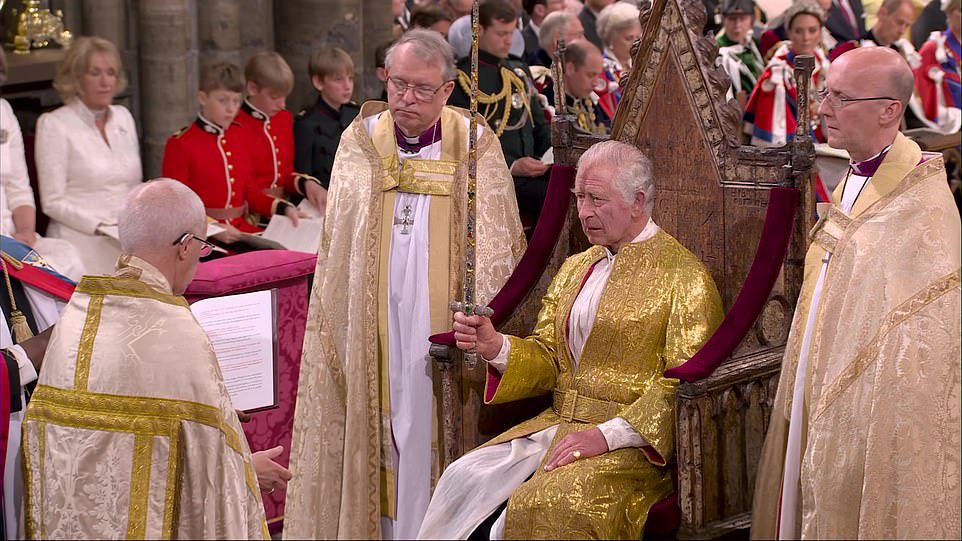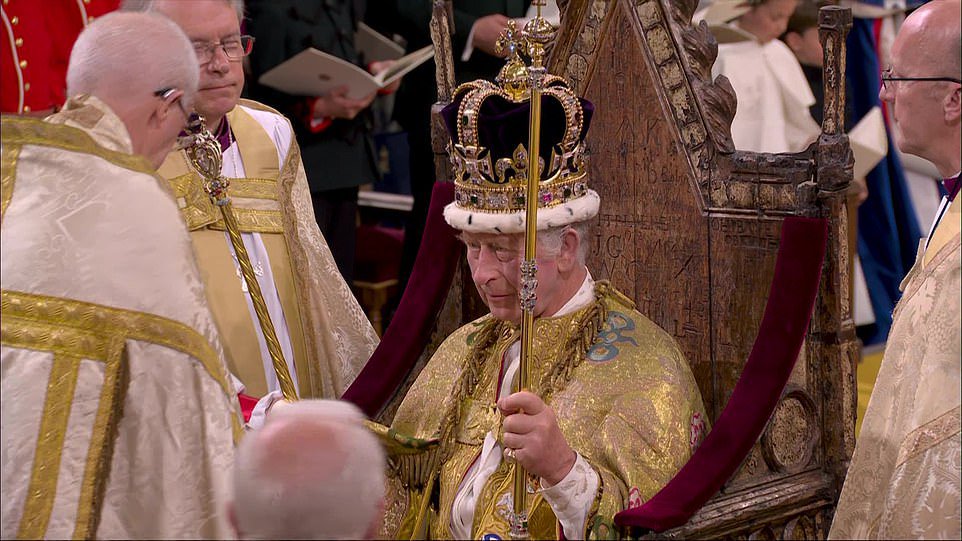King Charles III has formally been crowned King in the historic first Coronation in 70 years.
He was crowned at Westminster Abbey in London by the Archbishop of Canterbury, Justin Welby.
The king was crowned while seated in the Coronation Chair, holding the Sceptre with Cross in his right, gloved hand and the Sceptre with Dove in his left hand. He was crowned with St. Edward’s Crown, which was created in 1661 and will only be worn during the ceremony.
After the crown was placed on his head, the bells at Westminster Abbey rang for two minutes. King Charles was then escorted from the Coronation Chair to the throne.
Before the crowning, King Charles was presented with the coronation regalia.
He was first presented with the spurs, which “symbolize knighthood,” followed by the Sword of Offering; two armills made of gold, known as “bracelets of sincerity and wisdom;” the Coronation Orb, “symbolising the Christian world” with three sides representing the three continents known during medieval times; and the Sovereign’s Ring, representing commitment and is not worn during the ceremony.
Charles was then presented with the coronation glove, the same one his mother wore during her coronation, representing him as an advocate and challenger for the protection of the people. He was then given the sovereign’s sceptre with a cross which means “the sovereign’s temporal power,” and the Sovereign’s Sceptre with Dove, which represents “the sovereign’s spiritual role.”
Minutes earlier Charles swore on the Bible and kissed it, having taken the oath: ‘I, Charles, do solemnly and sincerely in the presence of God profess, testify, and declare that I am a faithful Protestant and that I will, according to the true intent of the enactments which secure the Protestant succession to the throne, uphold and maintain the said enactments to the best of my powers according to law.’
His family sat closest to him in a 2,300-strong congregation, although Prince Harry sat in the third row, away from Prince William, his wife and children, and other working royals.
A special personal prayer was written for the King to reflect the ‘loving service’ theme of the service, and the words were inspired in part by the popular hymn I Vow To Thee My Country.
He said God of compassion and mercy whose son was sent not to be served but to serve, give grace that I may find in thy service perfect freedom and in that freedom knowledge of thy truth. Grant that I may be a blessing to all thy children, of every faith and belief, that together we may discover the ways of gentleness and be led into the paths of peace; through Jesus Christ our lord. Amen.’
